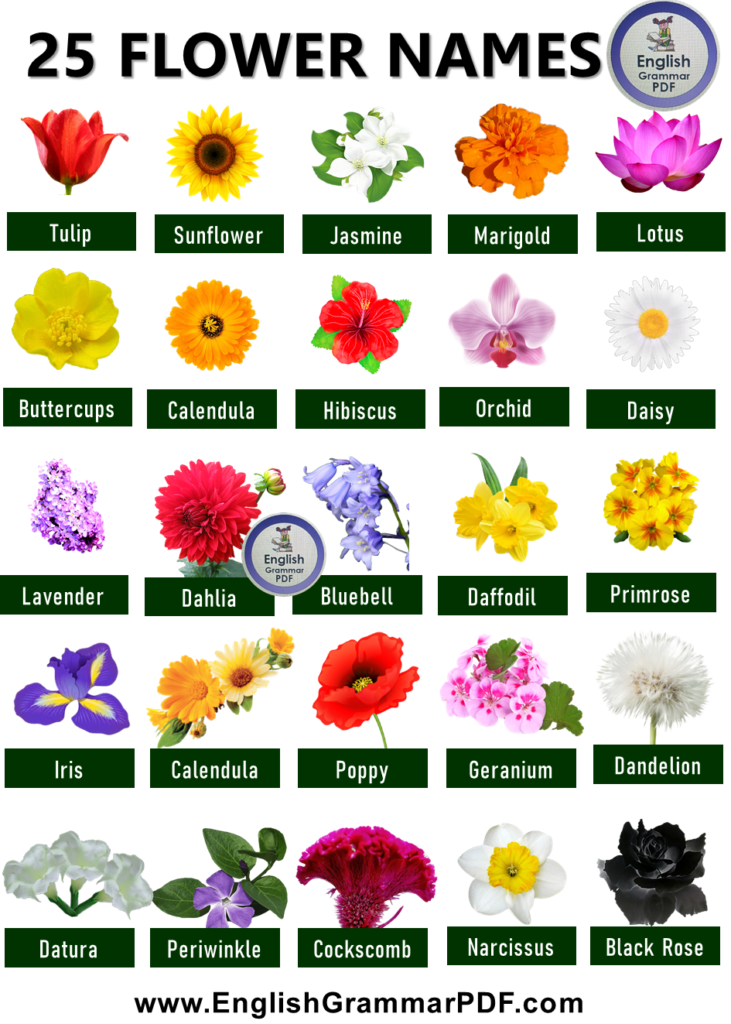People who don’t know English very well may find it a little confusing to remember the color names. I am writing this article based on the color names of English. The number of color names is huge! You can’t learn them all, so we have filtered some common color names in English.
Types of Colors in English
Colors are categorised into three basic types:
- Primary Colors: Yellow, Blue, Red.
- Secondary Colors: Orange, Violet, Green
- Tertiary Colors: Red-Violet, Yellow-Green, Blue-Violet, Red-Orange, Blue-Green, Yellow-Orange, etc.
What are Primary Colors in English?
English l+anguage is not my mother tongue so I have to say that the advice about what color goes with what for some people is a little more difficult than trying to learn their colors. The primary colors are red, yellow, and blue. They can be used as mixing all other colors. red
What are Secondary Colors in English?
The secondary colors are orange, green, and purple. They are produced by mixing two primary colors.
- purple = red + blue
- green= yellow + blue
- orange = red + yellow
The green color is made by mixing the two primary colors. There are different opinions about what are the best primary colors to mix to produce green. Some people claim that yellow and blue are the best primary colors to produce green, others say it is red and yellow.
What are tertiary Colors in English?
The tertiary colors are yellow-orange, red-orange, red-purple, blue-purple, blue-green, and yellow-green. They are made by mixing a primary color with a secondary one.
The main problem with tertiary colors is that they are difficult to distinguish from one another. In fact, the only tertiary color that can be easily distinguished from primary and secondary colors is yellow-green.
What are quaternary colors in English?
Quaternary colors are even more difficult to distinguish because they are made of four colors. Quaternary colors are made by mixing primary and tertiary colors: red-purple = red + blue + purple.

Table of Color Names with Pictures
| Amber | |
| Azure | |
| Beige | |
| Black | |
| Blue | |
| Bronze | |
| Brown | |
| Burgundy | |
| Charcoal | |
| Clay | |
| Coral | |
| Cream | |
| Cyan | |
| Gold | |
| Gray | |
| Green | |
| Indigo | |
| Lavender | |
| Magenta | |
| Maroon | |
| Mauve | |
| Mint | |
| Mustard | |
| Navy Blue | |
| Off White | |
| Olive | |
| Orange | |
| Peach | |
| Pink | |
| Purple | |
| Red | |
| Ruby | |
| Rust | |
| Silver | |
| Tan | |
| Teal | |
| Turquoise | |
| Violet | |
| White | |
 |
Yellow |
12 Color Names in English
Here are the 12 color names in English:
- Red
- Yellow
- Blue
- Black
- Orange
- Green
- White
- Purple
- Indigo
- Violet
- Grey/Gray
- Pink

Color Names with Definitions
Red

Red Color is a warm color. It has a strong visual stimulus, which makes it a very popular choice in the field of decorating and designing. Red symbolizes love and passion, courage and generosity, as well as religion.
Yellow

Yellow color is the color of sunshine. This light and bright color stimulate cheerfulness, energy, optimism, and creativity. It also stimulates appetite, hence it’s often used in restaurants to make people hungry!
Green

Green is the color of nature. It symbolizes life, youthfulness, and renewal. Nature lovers love this color of course! But green also calms and soothes, thus it’s a perfect choice for bedrooms.
Blue

Blue is the color of the clear sky and the deep ocean. This color stimulates peace, truthfulness, and responsibility. Blue symbolizes trustworthiness and loyalty, which makes it a very popular color in the design.
Purple

Purple is a combination of red and blue. It is a formal color, which symbolizes imagination and spirituality. Purple stands for nobility and luxury.
Pink

Pink (or rose) is a combination of red and white. This romantic color stimulates love and caring, as well as childhood memories. Pink symbolizes gentleness and tenderness.
Brown

Brown represents stability, reliability, and comfort. It stimulates the feeling of being calm and down-to-earth. Brown is a popular color in design, but it’s definitely not a very exciting one!
Black

Black stands for power, elegance, and formality – not to mention mystery as well! Black symbolizes authority, ambition, and discipline.
White

White is pure, innocent, and pristine. White symbolizes purity, freshness, and cleanliness. It stimulates the feelings of freedom, simplicity, and clarity – which is probably why it’s often used in clinical environments!
Teal

Teal color mixes green with blue to give a beautiful shade of nature. It’s said that this color calms you down, relieves stress, and stimulates clear thinking. So it’s perfect for the bedroom, spa, or wellness interiors!
Gray/Grey
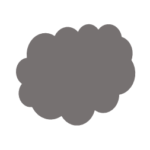
Gray is a neutral color, which makes it very easy to combine with other colors. It symbolizes stability, independence, and neutrality. If you want to create a stylish yet relaxing living room, then gray is the way to go!
Orange

Orange is a very energetic and optimistic color. Orange stimulates creativity, enthusiasm, and confidence. This color symbolizes passion, joy, and attraction. Orange is an attention-getter, which makes it a great choice for design!
Gold

Gold symbolizes wealth, richness, and luxury. It stimulates feelings of admiration, wisdom, fortune, and glory. Gold is one of the most popular colors in design!
Silver

Silver is a sophisticated color that stimulates clarity. Silver symbolizes success, sophistication, and beauty. This color symbolizes emotional stability and balance. Silver is a great choice for home decorating!
Indigo

Indigo is a color that falls between blue and violet in the spectrum. This color symbolizes depth, wisdom, and stability. Indigo is a perfect choice for home decorating!
Violet

Violet is a combination of red and blue. This color symbolizes spirituality, enthusiasm, and individuality. It stimulates creativity as well as the feeling of being unique! Violet is a perfect choice for home decorating!
Maroon

Maroon color is one of the best colors with pretty good brightness. The name was created in 1858 by the English adjutant John R. Maroon, thinking about his favorite color for clothing. It is an alloy of red and black, though sometimes it is darker or lighter than this.
Charcoal

Charcoal is a black color with a shiny surface. In the Middle Ages, charcoal makers were called “carbonari”, Italian words from which the name of the color was created in 1835. This color is always dark gray or black, but it can vary from light to very dark tones.
Rust

Rust may not be a pretty color but it gives a special touch to any composition. It is very particular because its tone can change from orange to dark brown depending on the light. Rust gets this name in 1826 as an analogy with the rust of metals
Ochre

In English, ochre refers to a color that has a yellow base and sometimes some red or brown hues. It has a medicinal or food flavor since it was named after the clay of this color found in France and England.
Cream

The cream is one of the most popular colors worldwide because it contains all the lightness and brightness that can be contained by one single color. The name was created due to some similarities with milk, which is the color’s main inspiration.
Mauve

Although today mauve is a pretty color, in the past it used to be an anti-fashion color because women were not allowed to wear colors at night or when they were mourning. The name was created in 1856 by the British chemist William Henry Perkin when he synthesized this color from coal tar.
Sage

Sage was a color that had to be used with some care since it could make ladies look old or sick. In order to find the perfect tone of this color, they used leaves from different plants and though its name in French refers to “green”, this is not where it originated.
Magenta

Magenta is considered one of the most eccentric colors since it has some pink, purple and red undertones that make it unique. It was created in 1859 by the English chemist William Henry Perkin when he synthesized this color from coal tar.
Khaki

This color got its name because it reminds us of the color of uniforms used by the British Army in India. This color has an earthy tone that was named after the dried leaves of this plant.
Bronze

The color of this material also has a greenish tone that can be pretty on its own or used as a metallic touch in other colors. This color was named by the English sculptor Anning Bell thinking about some objects made with bronze.
Garnet

Although some people think that garnet is a shade of red, it refers to a group of minerals that have a deep red color. Garnet is also an irregularly shaped stone, which gives it great versatility for use in jewelry and other objects.
Slate

This material was known since the Ancient Greece, but this name came from a verb related to slate roofing. For a period of time, this name used to be given to other materials used for roofing, but the original one finally prevailed.
Saffron
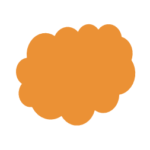
This color is named after the plant that produces saffron, an extremely expensive ingredient in cooking. It has a deep yellow hue with some orange tones and it can be found in different countries around the world.
Tan

This is a color that can vary depending on what it contains, but it has brown hues with subtle shades of yellow. The name was created in the early 20th century by the British company Selfridges.
Burnt Umber
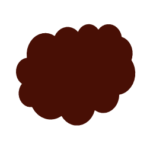
The name comes from two Italian words “burnt” and “umber”, which means burnt or dark umber. This is another color with an earthy tone that can be used in special compositions where it stands out, or in decoration projects for the home.
Celadon
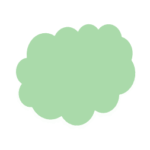
This word comes from a French word “celadon”, which alludes to some Chinese porcelain that was influenced by this type of greenish-yellow color. Celadon also has a tone that is very similar to some green and blue colors, which gives it even more versatility.
Mustard

No, the mustard color does not refer to the paste we eat with some sandwiches and it is named after this plant and its seeds. The color has a very particular tone that has been used in different compositions where brown is dominant.
Puce

This color gets its name from an old French word “pus”, which means flea. This is not the name’s only reference to animals since it also has a tone that is very similar to some dark brown colors.
Mahogany

Some say that mahogany got its name from the tree of this same color, but others think that it was created as a synonym for red. In any case, mahogany refers to a color with a warm tone that can be used in different projects.
Red Violet

This color is the result of a combination between red and violet and it is nearly as dark as maroon. The name was created in 1966 by Ximena Caminnegras, who used to say that this color’s name does not seem correct and she preferred violet red.
Fuchsia

This color got its name from a flower with a similar color, which in turn got its name from a Latin word related to a plant called “beegin”. Fuchsia has been popular since the 17th century and became even more so when this tone was used in one of Disney’s movies.
Lavender

This color is the light tone of the purple color family, with a very soft hue. The name was created by Lewis Rawle in his book about colors and it is derived from the French word “lavande”.
Coral
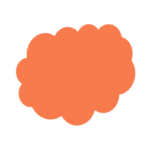
This color is so popular nowadays that it even has its own festivals. The name was created in the early 20th century by naming this type of stone after a plant with a similar appearance.
Peach

This color is named after a stone with the same name, which was originally called “Prussian yellow” by people who thought it looked like this metal. This tone has a warm and pastel look that makes it very interesting for interior design projects.
Burgundy

This color is a dark tone of red and the name was created as a synonym for this metal. Nowadays it is used to refer to a color with a similar hue, but lighter.
Honey

This is a color inspired by the appearance of honey from beehives and it also has some gold tones that make it stand out. The name was created in the 19th century by a person from New York.
Taupe

This color is a combination of different tones and it is named after this type of animal, which belongs to the same family as the moles. It has been widely used since the 20th century and it can be found in many compositions that include brown.
Pale Olive
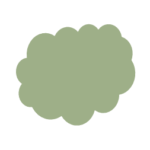
This name was created in the 19th century by a person from Boston and it is a lighter version of olive green, with an almost yellow tone. This color has different names all around the world, but most people agree that this is its original name.
Mauve

This is a color that was created as a combination between different tones and it is named after the genus of flowers with the same name. This tone has been very trendy for several years and can be found in various compositions.
Turquoise

This name is used all around the world and it is a combination of two words: “turk” and “es”, which means Turkish stone in Persian. This type of color can be either dark or light depending on its composition.
List of 50 Most Common Color Names
- Amber
- Aquamarine
- Azure
- Beige
- Black
- Blue
- Bronze
- Brown
- Burgundy
- Charcoal
- Clay
- Coral
- Cream
- Crimson
- Cyan
- Fuchsia
- Gold
- Gray
- Green
- Hot pink
- Indigo
- Ivory
- Khaki
- Lavender
- Lime
- Magenta
- Maroon
- Mauve
- Mint
- Mustard
- Navy blue
- Off White
- Olden
- Olive
- Orange
- Pea green
- Peach
- Pink
- Plum
- Purple
- Red
- Ruby
- Rust
- Silver
- Tan
- Teal
- Violet
- Wheat
- White
- Yellow



